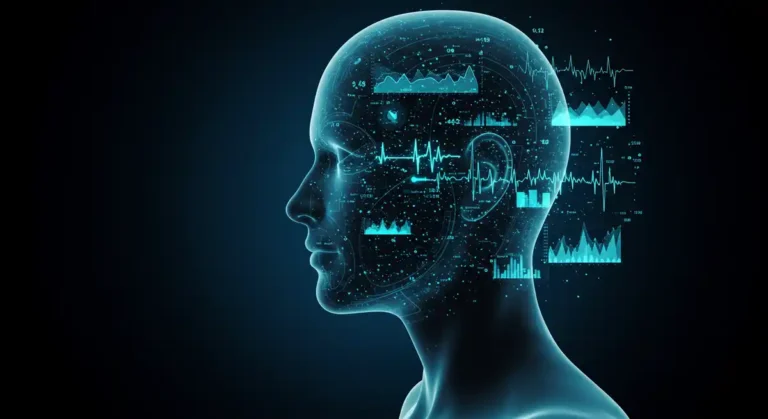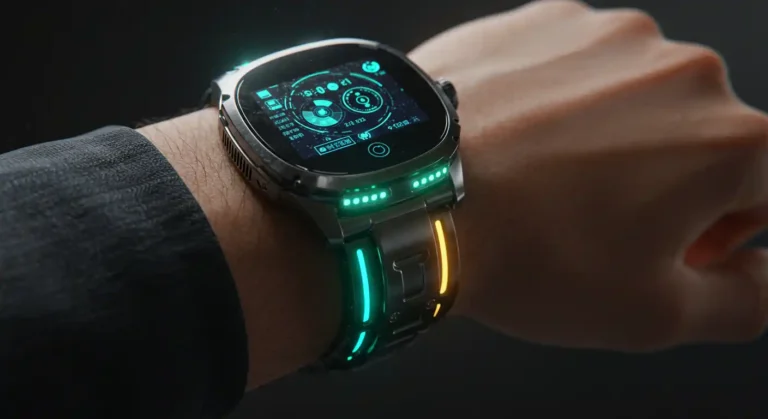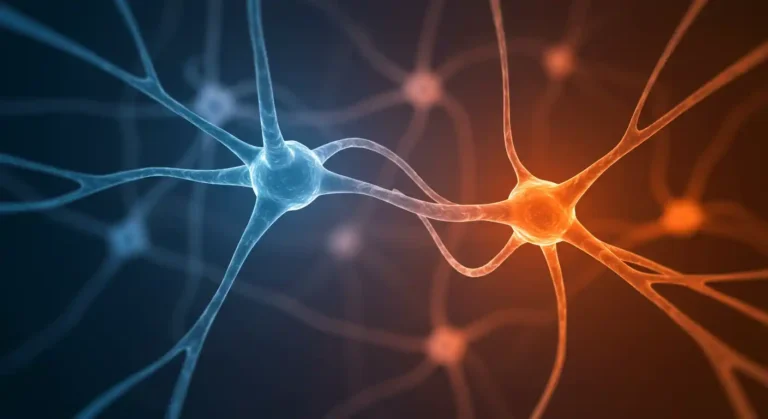How to Have More Energy (Without Caffeine): Science-Based Tips for Lasting Power
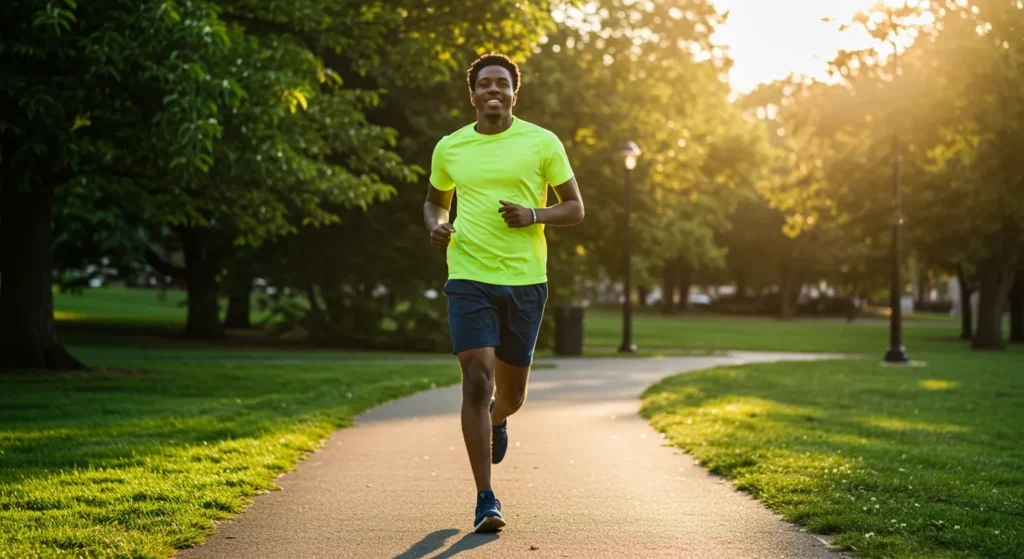
Let me guess – it’s 2:30 PM, you’re on your third coffee, and you’re still fighting to keep your eyes open? Been there! That afternoon energy crash is no joke, and honestly, it’s not your fault.
Listen, in a world obsessed with “hustle culture,” nobody’s talking about the real energy crisis – the one happening in your body right now. But here’s the good news: that whole dragging-yourself-through-the-day thing? Totally fixable.
How to have more energy? This isn’t about chugging more caffeine or forcing yourself to become a morning person. It’s about working with your amazing body instead of against it. Whether you’re a zombie before 10 AM, hitting a wall after lunch, or just tired of feeling… well, tired – I’ve got your back.
The New Wellness: Biohacking for Everyday Life
Okay, so “biohacking” might sound like something tech bros do in Silicon Valley garages, but stick with me! It’s actually super simple: making tiny, strategic tweaks to your daily habits that give you MAJOR energy upgrades.
Think of it as becoming the CEO of your own body. Instead of blindly following the same old “drink water, get sleep” advice (which, yes, still matters), you’re making informed decisions based on how YOUR unique body actually works.
What Makes It Different from Traditional Health Advice?
Let’s be real – traditional health advice can be a snooze fest. “Eat your veggies! Sleep more! Exercise!” Well, duh. But if it were that simple, would you be reading this right now?
Biohacking cuts through the one-size-fits-all nonsense. It’s like upgrading from flip-phone health advice to smartphone precision. Instead of vague “get more sleep” tips, you’ll learn exactly how to optimize your bedroom environment for the deepest sleep of your life. Game-changer, right?
Is Biohacking Right for You? (Hint: Yes, if you want to feel better daily)
“But isn’t biohacking just for fitness freaks and health nuts?” Nope! If you’ve tried all the usual fixes – earlier bedtimes, green smoothies, or those energy drinks that make your heart feel like it’s hosting a rave – but still feel blah, biohacking is absolutely for you.
The best part? No fancy gadgets or extreme lifestyle changes required. These techniques slide right into your regular routine, whether you’re a busy parent, office warrior, or student pulling all-nighters. We’re talking real solutions for real people with real lives.
The Real Reasons You’re Low on Energy (That No One Talks About)
Before we jump into fixes, let’s get honest about what’s actually draining your battery. Spoiler alert: it’s not just because you didn’t sleep enough last night!
It’s Not Just Sleep: The Hidden Energy Leaks in Modern Life
Sure, sleep matters – but there are sneaky energy vampires that nobody’s calling out:
- Your phone is an energy thief: The average person checks their phone 96 times a day! Each notification triggers a tiny stress response. It’s like having someone tap your shoulder every 10 minutes – exhausting!
- Your lights are lying to your brain: Those cool LED bulbs? Harvard research shows they’re tricking your brain into thinking it’s always daytime. No wonder you can’t wind down at night!
- Your home might be making you tired: Indoor air, synthetic fabrics, and even common cleaning products force your body to work overtime on detox duty. It’s like running a marathon in slow motion.
- Decision overload is real: From what to wear to which email to answer first, you’re making about 35,000 decisions daily. Is it any wonder your brain feels fried by dinner time?
How to Get More Energy Without Caffeine: Common Mistakes

Even when you think you’re doing everything right, these sneaky habits might be sabotaging your energy:
- You’re drinking water wrong: Chugging plain water without minerals is like pouring water on dry soil – it just runs right through! No wonder you’re still tired despite being “hydrated.”
- You’re barely breathing: That shallow chest-breathing you do while hunched over your laptop? It’s cutting your oxygen intake by up to 30%! Your poor cells are basically gasping for air.
- Your meal timing is out of whack: Late-night snacks and skipping breakfast confuse your body’s internal clock. It’s like constantly giving your metabolism jet lag.
- Your brain never gets a real break: Bouncing from work emails to social feeds to news apps keeps your brain in constant processing mode. Even when you’re “relaxing,” your mental energy tank is still draining.
Why Quick Fixes (Like Caffeine) Backfire in the Long Run
We’ve all been there – reaching for that afternoon coffee to power through. But here’s the caffeine truth bomb you need to hear:
Coffee doesn’t actually create energy – wild, right? It works by blocking adenosine, the chemical that tells your brain you’re tired. It’s like putting tape over your car’s empty gas light instead of filling the tank!
The kicker? Your smart body adapts by creating MORE adenosine receptors over time, meaning you need increasingly more caffeine just to feel normal. Talk about a vicious cycle!
Studies show that regular caffeine users actually have lower baseline energy than non-users when the caffeine wears off. That afternoon crash? You might actually be creating it with your morning brew. Mind = blown.
The Science of Sustainable Energy: How Your Body Really Creates Power
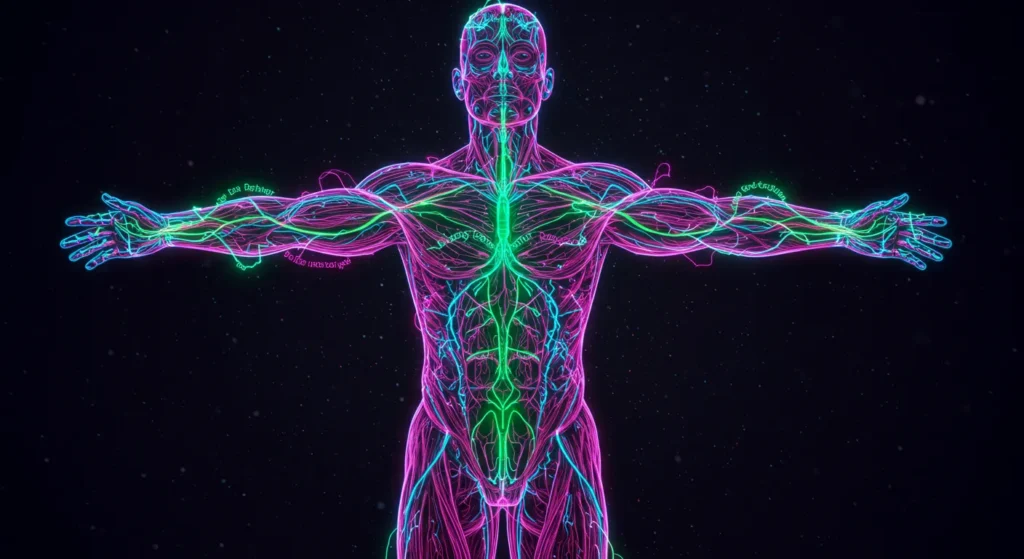
OK, let’s get to the good stuff – how your incredible body actually generates energy and how you can supercharge this process (without sketchy supplements or extreme diets).
Meet Your Mitochondria: Tiny Engines That Power Everything
Think of mitochondria as the tiny power plants inside nearly every cell in your body. These microscopic rock stars:
- Create 90% of your daily energy supply
- Cluster in energy-hungry organs (brain, heart, muscles)
- Respond QUICKLY to lifestyle changes (they’re listening to your choices!)
- Can actually increase in number when properly supported
Here’s the wild part: University of California research shows mitochondrial function typically declines about 8% each decade after 30. BUT – and this is huge – that decline isn’t inevitable! The right nutrition and movement patterns can maintain mitochondrial performance regardless of your age.
The secret isn’t forcing these cellular batteries to work harder (hello, caffeine and sugar). It’s removing the obstacles that are keeping them from working optimally in the first place!
From Fight-or-Flight to Recharge-and-Repair
Your nervous system is basically running two different programs that massively impact your energy levels:
- Sympathetic mode (fight-or-flight): Your body’s emergency response system. Great for outrunning bears, terrible for all-day operation. Imagine running your car in the red zone all the time – that’s what chronic stress does!
- Parasympathetic mode (rest-and-digest): Your body’s recovery program where it actually builds energy reserves. This is where the magic happens!
Here’s the problem: Modern life keeps most of us stuck in sympathetic overdrive – constantly reacting to emails, deadlines, social media, and endless to-do lists. It’s like trying to charge your phone while simultaneously running 50 apps. Not gonna work!
The good news? HeartMath Institute research shows you can shift from energy-draining stress to recovery mode in just 60-90 seconds with the right techniques. I’ll show you exactly how later.
Circadian Rhythm Sync: The Overlooked Energy Upgrade?
Your body has an internal clock that’s WAY smarter than your Apple Watch. It orchestrates hundreds of processes throughout your 24-hour day:
- Morning: Natural cortisol spike gets you going (no caffeine needed!)
- Midday: Digestive systems hit peak performance
- Evening: Melatonin production ramps up for recovery
- Night: Cellular repair crews work their magic
When your daily habits align with these natural rhythms, everything runs smoothly. But work against them – late-night Netflix, irregular meal times, afternoon espressos – and your body burns precious energy just trying to figure out what time it is!
The difference is massive: Sleep Medicine Reviews research found people with well-synchronized circadian rhythms needed 42% less recovery time after mental and physical exertion. That’s like getting a 42% energy discount just by working with your body’s natural schedule!
How to Have More Energy: Simple Biohacks to Feel Better Today
Enough theory – let’s get practical! These are my favorite instant energy upgrades that work TODAY (no waiting weeks for results).
The 3-Minute Morning Protocol to Wake Up Your Brain
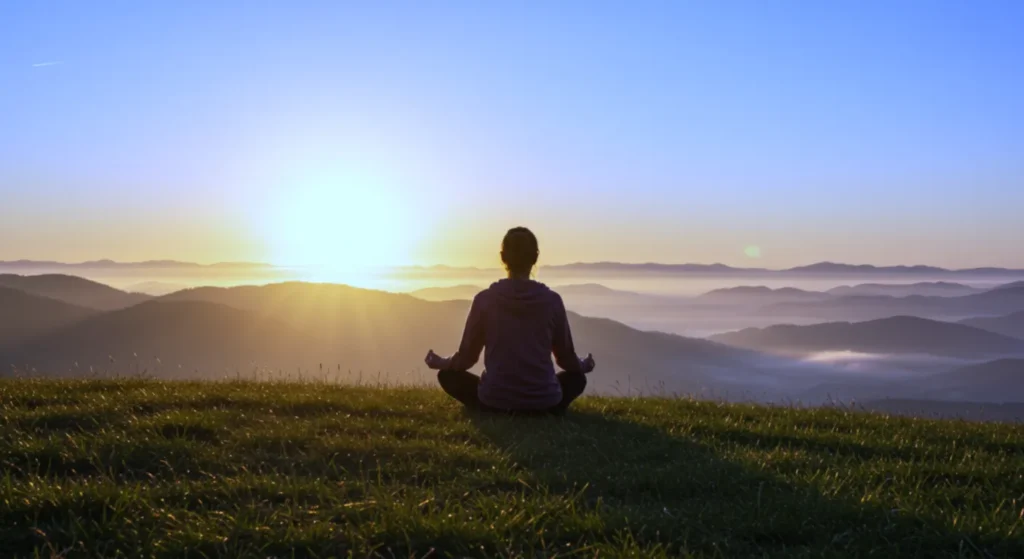
Forget complicated morning routines – this simple 3-minute sequence will change your entire day:
- 30 seconds of alternate nostril breathing: Cover your right nostril with your thumb, inhale through your left nostril. Then switch, covering left nostril, exhaling through right. Continue alternating for 30 seconds. Feels weird, works amazingly! This instantly balances your nervous system and gets oxygen flowing.
- 60 seconds of morning sunlight: Within 10 minutes of waking, step outside or look out a window. Morning light tells your brain “it’s daytime – time to be alert!” Northwestern University research found this simple habit improved energy levels throughout the day by 25%. That’s better than most supplements!
- 90 seconds of movement: Nothing fancy – jumping jacks, gentle stretches, or dance to your favorite song. This wakes up your muscles and gets blood flowing to your brain. Way more effective than scrolling social media in bed!
This sequence works because it sends clear wake-up signals to your body’s natural energy systems, rather than jarring you awake with alarm clocks and immediate screen time. Try it tomorrow – you’ll be shocked at the difference!
Breathwork for Midday Energy (Better Than Espresso)

Next time you hit that afternoon slump, skip the coffee shop line and try this instead:
The Physiological Sigh: Take a deep breath in through your nose, then sneak in a little more air at the top, and exhale completely through your mouth with a satisfying “ahhh” sound. Repeat 3-5 times.
Sounds too simple to work, right? But Stanford neuroscientist Dr. Andrew Huberman’s research shows this breathing pattern rapidly resets carbon dioxide levels in your bloodstream, instantly reducing stress and boosting alertness.
For maximum afternoon revival power, pair with:
- A quick 3-5 minute outdoor walk (even around the parking lot counts!)
- A glass of water with a tiny pinch of salt (electrolytes for the win!)
- A few moments of natural sunlight on your face
People in our community report this combo gives them a cleaner, steadier energy boost than caffeine – without the jitters or sleep disruption later. Win-win!
Movement Snacks: The 60-Second Trick for Beating Fatigue
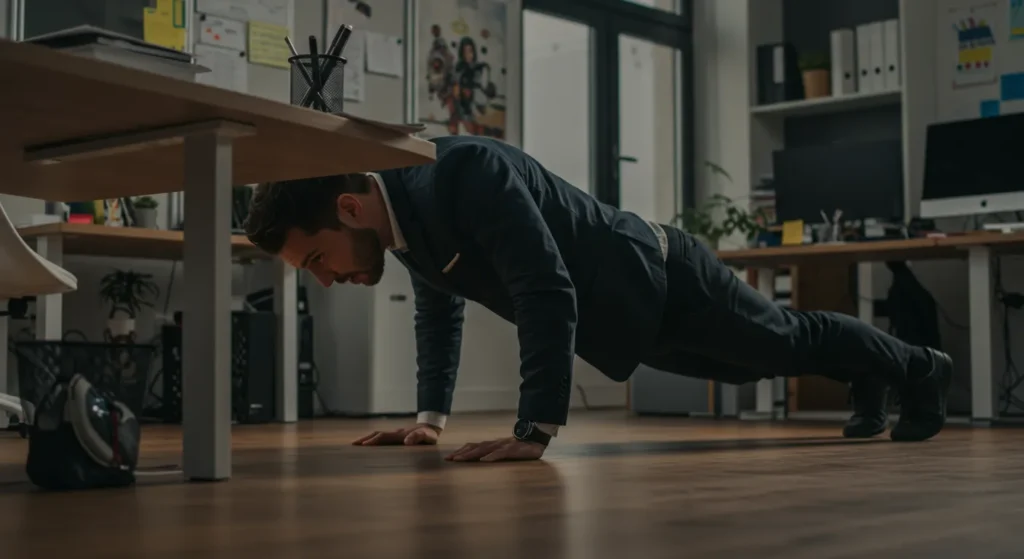
Sitting is the new smoking when it comes to energy drain. Instead of powering through fatigue, try sprinkling these “movement snacks” throughout your day:
What: Quick 30-90 second movement bursts When: Every 45-60 minutes (set a discreet reminder!) How: Pair with habits you already do (after sending emails, before meetings) Examples:
- 10 desk push-ups or wall presses
- 15 air squats
- 30 seconds of stretching whatever feels tight
- One flight of stairs
University of Colorado researchers found these micro-movement breaks were MORE effective at maintaining energy levels than a single 30-minute workout. The secret? Consistency beats intensity every time.
These quick movements get blood flowing, wake up your lymphatic system, and trigger the release of brain-derived neurotrophic factor (BDNF) – basically Miracle-Gro for your brain cells. Hello, mental clarity!
Natural Light + Water = Underrated Power Combo

Two of the most potent energy boosters are completely free and ridiculously underutilized:
Strategic hydration: Instead of guzzling a gallon all at once, try this targeted approach:
- 16oz with a pinch of salt first thing in the morning (rehydrates after sleep)
- 8-12oz 30 minutes before meals (preps digestive system)
- 8-12oz between meals (maintains optimal cell function)
Did you know even slight dehydration (just 1-2% below optimal) can tank your energy by up to 30%? Most people walk around in a perpetually dehydrated state and never connect it to their fatigue.
Light exposure patterns: Your brain is constantly scanning light levels to determine how alert you should be:
- Morning bright light: Tells your brain “Wake up! It’s go time!”
- Midday outdoor breaks: Resets your internal clock and hormone production
- Evening light reduction: Signals “start winding down for deep sleep”
One Journal of Clinical Sleep Medicine study found office workers with regular natural light exposure reported 42% higher energy levels and 46% better sleep. That’s a MASSIVE return on investment for simply getting outside a few times a day!
How to Have More Energy: Build Your Personalized Energy Routine
Now that you know the building blocks, let’s create an energy plan you’ll actually stick with (because the best routine is the one you’ll actually do!).
Start Small: Stack 1-2 Habits That Fit Your Day
Let’s get real – trying to overhaul your entire lifestyle overnight is a recipe for failure. Research on habit formation is crystal clear: small changes stick, massive overhauls don’t.
Instead, cherry-pick just 1-2 practices from each category that sound doable and appealing to YOU:
Morning energy kickstarters:
- Morning light exposure (even through a window counts!)
- Room-temp water with a pinch of salt
- 90 seconds of gentle movement
Daytime energy maintenance:
- Those movement snacks we talked about
- Strategic meal timing
- Quick breathing resets
Evening energy recovery:
- Dimming lights after sunset (or blue-blockers)
- Simple relaxation practice (even 2 minutes helps!)
- Sleep environment tweaks
The secret sauce? Attach these new habits to things you ALREADY do – what behavioral scientists call “habit stacking.” Morning light while sipping your first water, breathwork while waiting for your lunch to heat up. Your brain loves these connections!
Track What Works: Use Feedback, Not Perfection
Here’s what makes biohacking different from generic health advice – it’s totally personalized to YOUR body. We’re all energy snowflakes!
Try these simple tracking methods:
- Rate your energy 1-10 at specific times each day
- Notice patterns (that lunch makes you sleepy, that walk perks you up)
- Test one change at a time for 5-7 days to see real effects
This turns energy optimization from a rigid protocol into a personal discovery journey. As Stanford behavior scientist BJ Fogg says: “Tiny adjustments based on personal feedback create more sustainable change than large interventions based on generic advice.”
Remember: consistency trumps perfection EVERY time. A “good enough” approach you stick with will run circles around the “perfect” plan you abandon after three days.
What We Use and Recommend: Our Favorite Low-Lift Tools
While fancy gadgets aren’t necessary, these simple tools can seriously amplify your results:
For morning wake-ups:
- Light therapy lamp for dark winter mornings
- Quality electrolyte mix (without the artificial junk)
- Simple fitness tracker for baseline step counts
For daytime energy management:
- Time-blocking app for energy-intensive tasks
- Habit tracker with gentle reminders
- Desktop water bottle with measurement marks
For evening wind-downs:
- Blue-light blocking glasses (game-changer!)
- Blackout curtains or sleep mask
- White noise machine or rain sounds app
No Judgment, Just Progress
So how to have more energy? Energy optimization isn’t a destination—it’s an ongoing conversation with your unique body.
Some days you’ll nail every habit and feel amazing. Other days, you’ll face deadlines, sick kids, or just plain life. That’s normal. We’re here for all of it.
Our community is built on three core principles:
- Progress over perfection: That 5-minute walk when you’re swamped beats the 60-minute workout you skip entirely.
- Curiosity over criticism: Instead of “I’m so lazy for skipping my morning routine,” try “Interesting—I notice I skip my routine when I check my phone first thing. How might I adjust?”
- Data over drama: Your energy isn’t “good” or “bad”—it’s information. Learn to read the signals without judgment.
“The lack of guilt-tripping was what finally made wellness click for me,” shares Michael, a software developer and community member. “For the first time, I’m making consistent changes instead of ping-ponging between extreme discipline and total burnout.”
Sound like your kind of people? We’d love to have you join us.
🎯 Ready to Go Deeper? Here’s Where to Start
You don’t need to be an expert, a biohacker with implants, or someone who lives on supplements to start optimizing your energy.
The truth is: real biohacking begins with self-awareness.
And one of the most powerful things you can do today is understand how your unique biology responds to stress, rest, light, food, and movement.
Want more focus, energy, and flow? Our 3-minute test reveals your biohacker profile—and gives you high-leverage upgrades tailored to your system.
Disclaimer: The information provided on this site is for informational purposes only and should not be considered medical advice. Always consult with a doctor before making any changes to your health regimen or treatment plan.



